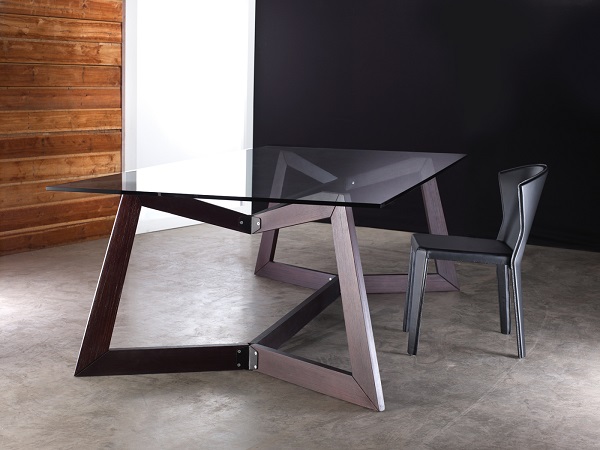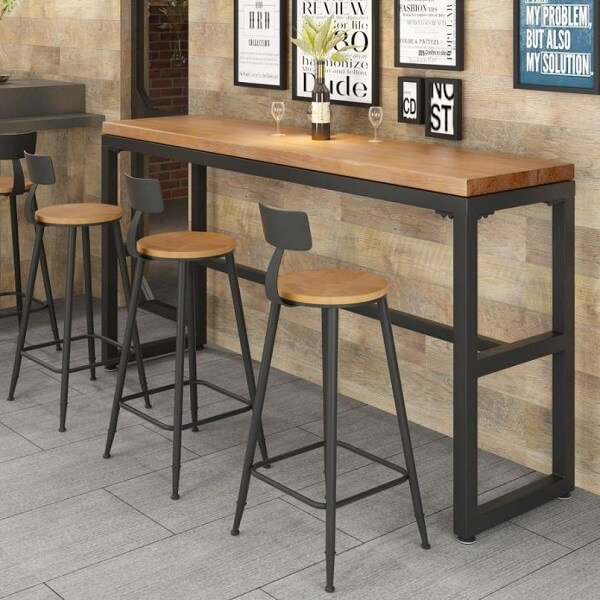Since restaurant table bases are not discussed in everyday conversation, even among restaurant owners, there are some secrets that should be known about restaurant table bases before purchasing them. Before these secrets are revealed, consider what types of bases are used in restaurants.
There are various ways to support a table top, but most all bases for restaurants are metal bases which are composed of three parts. The top part is the cast iron top plate, also known as the spider, which is the piece of metal that attaches to the bottom of the table. The middle part is the column, composed of a tube usually 3” or 4” in diameter, with a ½” rod in the middle of the column which connects the spider to the base plate. The bottom part is the base plate that sits directly on the floor. The base plate usually has levelers in it to help prevent the table from wobbling.
Consider Below Mentioned 11 Secrets about Restaurant Table Bases
The secrets below only relate to the metal restaurant bases just described and the metal cantilever. There are other types of bases, but they comprise around one percent or less of restaurant table bases. Read on for all the information you need to know about restaurant table bases.
1. Is base shape important?

Table base shape is important because of the basic difference between the two basic bases. The two basic base types are the round base or the cross base, which is also known as the X base. Generally, round base bottoms are heavier, and can have 5 levelers, while a cross base normally has 4 levelers. When round bases are manufactured with 5 levelers, there is one more point of contact with the floor to level the base, which helps prevent it from wobbling. Round base plates also tend to make it easier for customers to find a place to put their feet, as a cross or x-style base has 4 arms that change the elevation of the base bottom.
2. Is there an alternative to prevent customer’s feet kicking table base bottoms?
Restaurant owners should consider using a cantilever. When using the cantilever style base, customers’ feet hit the floor and not a table base bottom. Cantilever bases should be consider when restaurant owners are concerned with customer comfort. A cantilever is a square metal tube table base that is attached to the wall, so there is no base bottom. All of the weight of the table top is supported by the cantilever, so there is no weight on the floor. The cantilever base is typically used with booths, but can be used with any table next to a wall.
A cantilever does require some pre-planning when constructing a restaurant, because extra strength needs to be applied to the wall. Plain sheet rock will not hold the bolts of the cantilever base effectively. Brick or concrete walls work well. If the wall is composed of studs, then a 2” x 6” or 2” x 10” block of wood placed between the studs will work well.
3. Are all table bases the same weight?
All metal table bases are not the same weight. Round table bases will usually be heavier, and because of their weight, can support tables a bit more solidly. Round bases can also hold an extra leveler for more table stability.
4. Designer bases, are they right for any size table?

Because of the shape of the designer restaurant table base, the base bottom does not spread out as far on the floor. Caution should be taken to match the correct table base size with the table top size. If there is close decision whether to go with the larger base as a rule of thumb, always go with the larger base. Designer bases are frequently used in coffee shops, ice cream stores or waiting areas where smaller table tops are used and where it is important to have the base to have a look other than a plain round column.
5. Can I put my table bases outside?
There are aluminum or stainless steel bases that are manufactured for outdoor use, and can be placed directly outside. The metal bases discussed here are usually made of steel, which would rust even though the outer side is painted with a black lacquer. The secret here is to spray paint the steel metal base with a rust-blocking paint. Rust-blocking paint can be purchased at almost any hardware store. Painting the steel bases is inexpensive and surprisingly easy to do.
6. What should I use to prevent my table base from wobbling?
At many restaurants, you’ll see napkins, coasters and other objects placed under table bases in an attempt to prevent the table from wobbling. This is a very bad idea. Many customers who notice table napkins or other items under their table may think the restaurant is unsanitary, which is not beneficial in trying to attract repeat customers. Servers, busboys and customers only use these items to try to fix a wobbly table top. Restaurant staff should be trained to use the levers, or replace missing levelers, to prevent a table top from wobbling. Restaurant table tops should be tested for stability at the beginning of every shift.
7. Are all bases the same height?
No, table bases are not the same height. Different manufacturers make their table bases in different heights for various reasons. One reason for different height bases is some manufacturers make them for either thinner or thicker top tables. Bases can be cut shorter to accommodate various table thicknesses. For most restaurants, metal table bases with the table top attached should not be higher than an overall height of 30 inches.
8. When does a table top need more than one base?
There are two situations where two table bases may be a better choice. The bases referred to here are ‘T’ bases, called that name because they look like an upside down ‘T’. Rectangular tables such as a 30” x 48” are more stable with 2 of these bases than just one round or X base. Also, larger round tables are sometimes more effectively stabilized with 3 or more ‘T’ bases.
9. Why do stand up bar tables need better bases?

Stand up tables are typically 42” tall, while dining height tables are about 30” tall. With the extra height on a stand up table, a thicker column more beneficial in preventing the taller tables from wobbling. Columns come in different steel gauges, and for a stand up table, it is better to use a 16 gauge column rather than a 22 gauge. The heavier the table top, the thicker gauge column is needed. And like dining height bases, stand up restaurant table bases need to have the table top size matched to the size of the supporting metal base.
10. What is important about table base parts?
Quality parts are one of the most important aspects regarding because most table bases are purchased outside of the USA and there is no standard for quality. The bolts or also called threaded rods sometimes do not match the nut to assemble the base, or the column can be cut at a slight angle causing the table to lean. The best practice is to avoid inexperienced table base vendors.
11. Why should table bases be checked at the start of every meal shift and between customers?
Many restaurant owners work very hard at making sure the food is prepared correctly, but they may miss the importance of a safe, stable table for the customer. Wobbly tables do not create a positive dining experience. Most restaurant floor surfaces are not flat, so when tables are moved around the restaurant, odds are that the base will have a leveler fall out, or the table will be placed on an uneven surface causing it to wobble. This is why table bases need to be checked every time a table changes customers.
Conclusion
Use these 11 small restaurant table base secrets to help create a great customer experience and ensure your customers will return. Yes, the rarely talked about or noticed table base is really that important!

